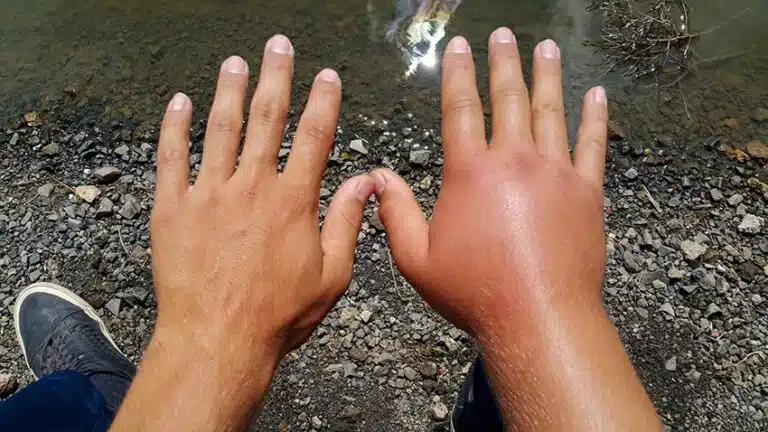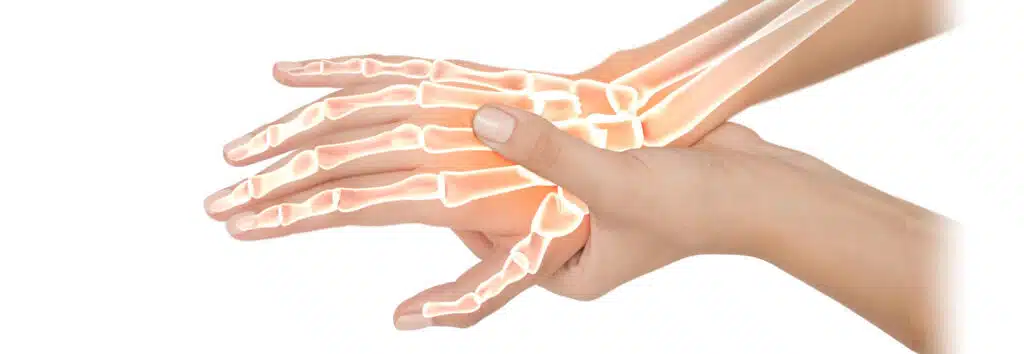This website uses cookies so that we can provide you with the best user experience possible. Cookie information is stored in your browser and performs functions such as recognising you when you return to our website and helping our team to understand which sections of the website you find most interesting and useful.
INFECTIONS OF THE HANDS:
Hand infections can occur due to various causes, including cuts, puncture wounds, burns, animal bites, surgical procedures, or underlying medical conditions compromising the immune system. These infections can range from mild to severe and may affect the hand’s skin, soft tissues, joints, or bones.
Types of hand infections include:
Cellulitis: A common bacterial infection of the skin and underlying tissues, often caused by bacteria such as Staphylococcus aureus or Streptococcus pyogenes. Cellulitis typically presents with redness, warmth, swelling, and pain in the affected area. It can spread rapidly if not treated promptly.
Abscess: An abscess is a collection of pus that forms within tissues in response to an infection. Abscesses in the hand can occur as a result of bacterial infections, often originating from a wound or injury. They may cause localized swelling, tenderness, warmth, and redness.
Felon: A felon is an abscess or infection of the fingertip, usually resulting from a puncture wound, cut, or injury to the finger. It typically causes severe pain, throbbing, swelling, and redness at the fingertip.
Paronychia: Paronychia is an infection that affects the skin around the nails, often due to trauma, nail-biting, or prolonged exposure to moisture. It can cause redness, swelling, tenderness, and pus-filled lesions around the nail folds.
Osteomyelitis: Osteomyelitis is a bacterial infection of the bone, which can occur secondary to trauma, surgery, or the spread of infection from nearby tissues. It may cause severe pain, swelling, warmth, and limited range of motion in the affected joint or bone.
Septic Arthritis: Septic arthritis is an infection of a joint, which can result from bacteria spreading through the bloodstream or from direct inoculation into the joint space. It causes severe pain, swelling, warmth, redness, and decreased range of motion in the affected joint.


Incision and surgical drainage of hand infections are medical procedures to remove pus, infected tissue, and fluid buildup from an infected area within the hand. This procedure is for severe infections, abscesses, or collections of pus that cannot be adequately drained through less invasive methods such as needle aspiration.
How the incision and surgical drainage of hand infections procedure is performed:
Preparation: Before the procedure, the hand is cleaned and sterilized with antiseptic solutions to minimize the risk of introducing additional bacteria into the wound.
Anesthesia: Local anesthesia is usually administered to numb the area around the infected site and reduce pain during the procedure. In some cases, regional anesthesia or sedation may also be used, depending on the severity and location of the infection.
Incision: Once the area is numbed, Dr. Pournaras will make a small incision (cut) over the site of the infection using a scalpel or surgical blade. The incision is carefully placed to provide optimal access to the infected area and allow for thorough drainage of pus and infected fluid.
Exploration: After making the incision, Dr. Pournaras gently explores the wound with surgical instruments to identify and assess the extent of the infection, abscesses, or pockets of pus. Any necrotic (dead) tissue or foreign material may be removed during this step to promote healing and prevent further spread of infection.
Drainage: Once the infected area is identified, Dr. Pournaras will use specialized instruments or gentle pressure to express and drain the pus and fluid buildup from the wound. This helps to relieve pressure, reduce inflammation, and help heal of the infected tissues.
Irrigation: After drainage, the wound is thoroughly irrigated with sterile saline solution or antiseptic solution to flush out any remaining debris, bacteria, or contaminants from the wound.
Closure: Depending on the size and depth of the incision, the wound may be left open to heal by secondary intention (allowing it to heal naturally from the inside out) or partially closed with sutures or wound dressings to promote optimal healing and prevent further contamination.
Postoperative care: Following the procedure, antibiotics may be prescribed to prevent or treat infection, as well as pain medications and instructions for wound care and follow-up appointments. It’s essential for patients to keep the wound clean, dry, and protected to minimize the risk of complications and promote optimal healing.
Incision and surgical drainage of hand infections are generally safe and effective procedures to help heal the infection.

Call Us Today To Make An Appointment for Surgical Drainage
Make Your Appointment Today
Fair Oaks Orthopedics – Fairfax,VA

FAIR OAKS ORTHOPEDICS
3998 Fair Ridge Dr., Suite 100 Fairfax, VA 22033
Get Directions
Hours:
Mon 8:00 am – 4:30 pm
Tue 8:00 am – 4:30 pm
Wed 8:00 am – 4:30 pm
Thu 8:00 am – 4:30 pm
Fri 8:00 am – 4:30 pm
Sat Closed
Sun Closed

